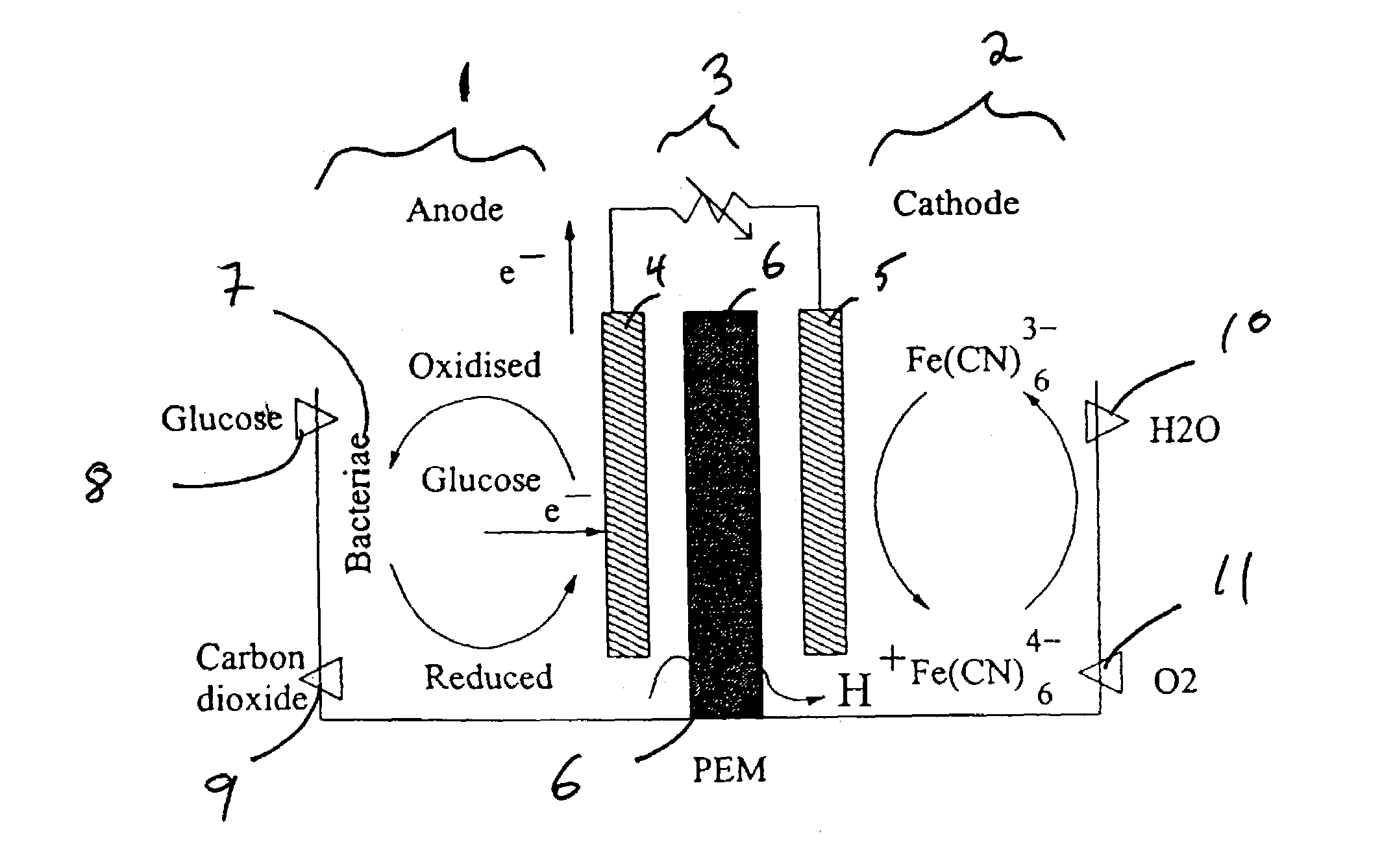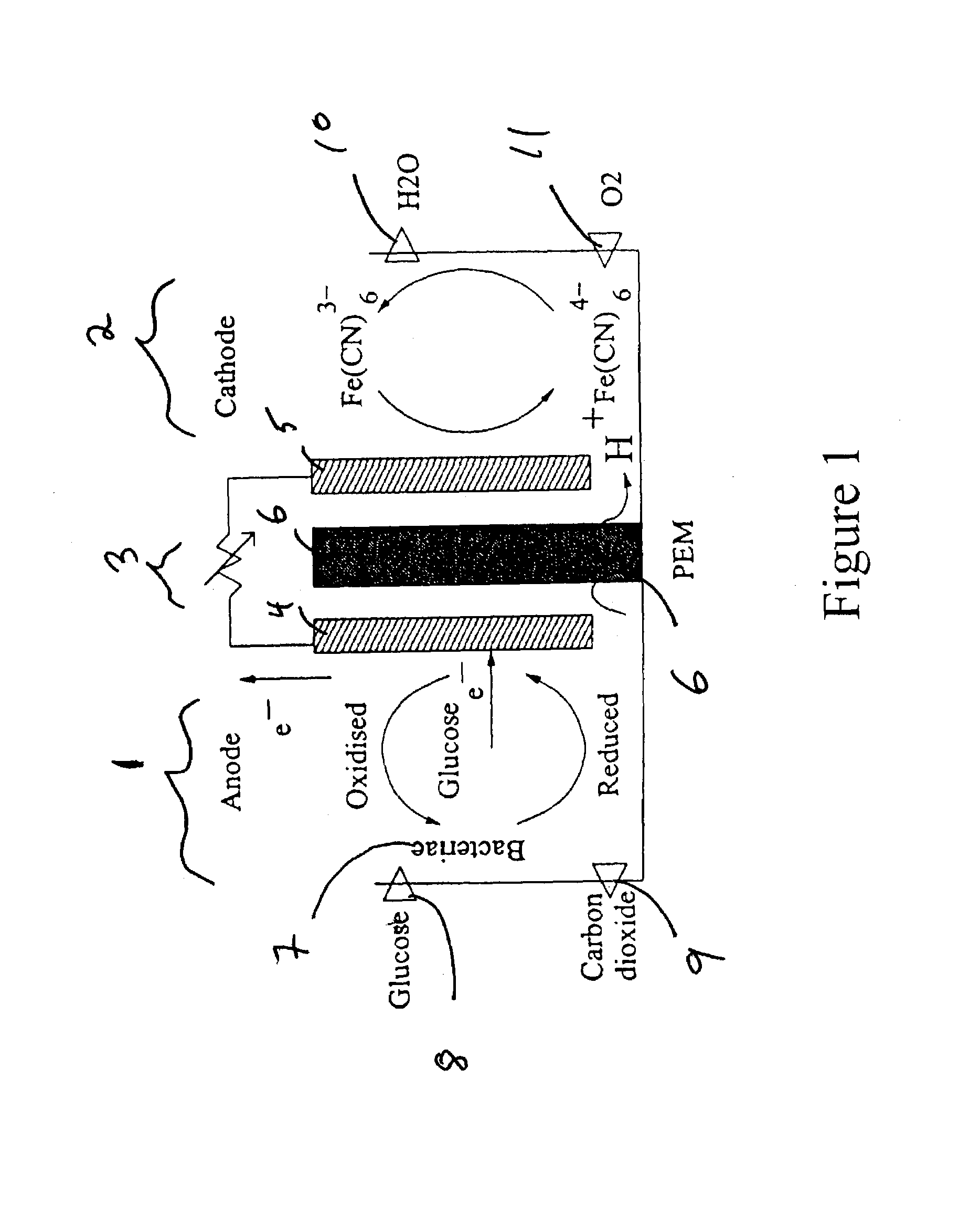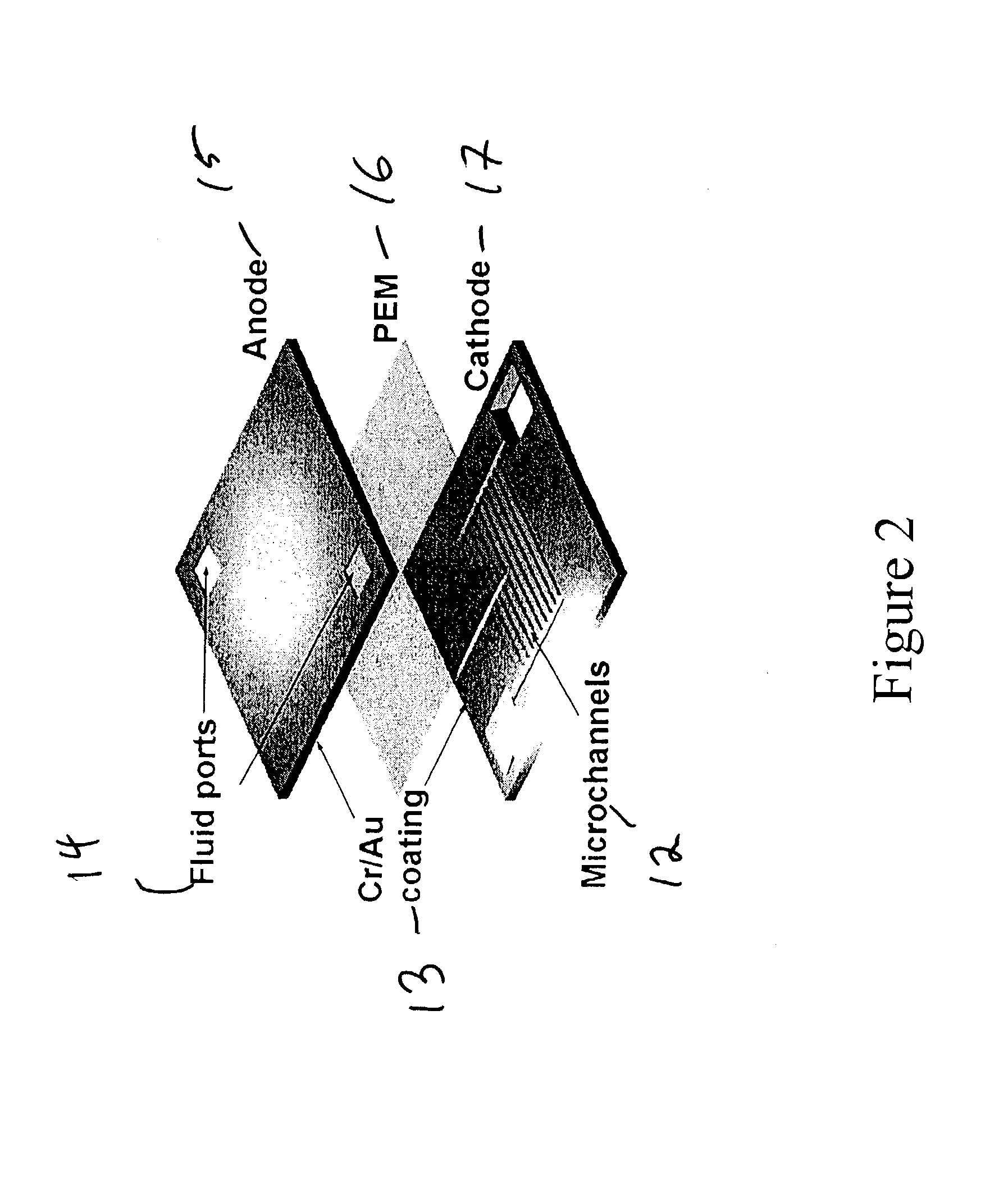Implantable, miniaturized microbial fuel cell
a fuel cell, microorganism technology, applied in the direction of fuel cell details, cell components, electrochemical generators, etc., can solve the problems of incompatibility with implantable devices, lithium battery power sources tend to be relatively bulky and expensive, and microbial fuel cells of the prior art are typically too bulky
- Summary
- Abstract
- Description
- Claims
- Application Information
AI Technical Summary
Benefits of technology
Problems solved by technology
Method used
Image
Examples
example 1
[0060]The open circuit voltage response as a function of time of the above microbial fuel cell (FC-I) is depicted in FIG. 5. In both cases depicted in FIG. 5, methylene blue was used as an electron mediator in the anode compartment. For anolyte solution including yeast (solid triangles), the open circuit voltage fluctuates from about 160 millivolts (mV) to about 480 mV with an average voltage over the 43 minute test period of approximately 343 mV. For anolyte without yeast (open squares), but otherwise having the same composition as the solid triangles, the voltage is seen to remain at a substantially constant 25 mV.
example 2
[0061]The effect of methylene blue electron mediator on fuel cell performance is considered. Anolyte without methylene blue (but including yeast) is introduced into the anode compartment. The open circuit potential is found to increase from about 25 mV to about 40 mV in about 10 minutes, and then to remain at about 40 mV for approximately 30 minutes more. When fresh anolyte is added into the fuel cell's anode compartment along with the anolyte already present, a time delay of approximately 10 min to 15 min is observed before the open circuit potential reaches its peak value.
[0062]The ramping rate of the open circuit potential seen in FIG. 5 may be largely determined and limited by the rate of yeast metabolism and could be improved if a more metabolically active microbe were used.
[0063]The decline in open circuit potential observed to occur in FIG. 5 after about 30 minutes is likely due to the consumption of available glucose and the consequent decline in the rate of production of el...
example 3
[0064]Fuel cell discharge tests were also performed under 10 ohm and 50 ohm loads and results are given in FIG. 6. Under a 50 ohm load, the current initially jumped to approximately 1.3 μA / cm2 (microamps / sq. cm.) after the first few drops of anolyte and catholyte were introduced into the anode and cathode respectively. The current density under 50 ohm load dropped to approximately 0.58 μA / cm2 after about 5 minutes. However, it is consistently observed that the current density recovers to about 1.2 μA / cm2 after fresh drops of anolyte and catholyte are introduced into the fuel cell. Under a 10 ohm load, the current density initially rises to approximately 15 μA / cm2 then drops to approximately 3.6 μA / cm2 after about 14 minutes. The power density of the fuel cell (I2R) is approximately 0.5 microwatt per cm3 under a 10 ohm load.
Fuel Cell Structure II (FC-II)
[0065]FIG. 11 depicts in cross-sectional view the anode-PEM-cathode assembly typically used in some embodiments of the present inven...
PUM
| Property | Measurement | Unit |
|---|---|---|
| diameter | aaaaa | aaaaa |
| surface area-to-volume ratios | aaaaa | aaaaa |
| thickness | aaaaa | aaaaa |
Abstract
Description
Claims
Application Information
 Login to View More
Login to View More - R&D
- Intellectual Property
- Life Sciences
- Materials
- Tech Scout
- Unparalleled Data Quality
- Higher Quality Content
- 60% Fewer Hallucinations
Browse by: Latest US Patents, China's latest patents, Technical Efficacy Thesaurus, Application Domain, Technology Topic, Popular Technical Reports.
© 2025 PatSnap. All rights reserved.Legal|Privacy policy|Modern Slavery Act Transparency Statement|Sitemap|About US| Contact US: help@patsnap.com



